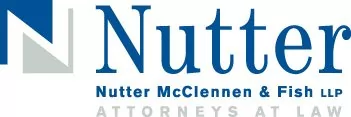The United States Patent Office recently released proposed regulations for implementing one of the most important provisions of The America Invents Act (AIA), which changes the "first-to-invent" rule to "first-inventor-to-file" rule under which an inventor will be denied patent protection if the claimed subject matter is disclosed or claimed in a patent application of another inventor, which has an earlier effective filing date.
The AIA which was signed by President Obama into law last
September is considered by many as the most expansive overhaul of
the U.S. patent system since its codification in the Patent Act of
1952. This massive change will have significant impact on the way
innovators, ranging from start-up companies to Fortune 500
corporations to academic institutions, protect their intellectual
property.
The "first-inventor-to-file" provision will be applied
to patent applications filed on or after March 16, 2013. Moreover,
the AIA expands the scope of prior art that can negate
patentability to include any public disclosure (including oral
disclosures), use or sale of the invention anywhere in the world
prior to the effective filing date. In contrast, under the existing
patent laws, use or sale of the invention in a foreign country as
well as oral disclosures do not necessarily negate
patentability.
These changes bring the U.S. patent laws much closer to those of
the rest of the world where absolute novelty is required for
seeking patent protection for an invention. The AIA, however,
provides exceptions to the absolute novelty requirement based on an
inventor's own public disclosures. In particular, it provides a
one-year "grace period" during which publication of the
invention by the inventor or someone who has obtained the invention
from the inventor will not negate patentability. Additionally, an
inventor's public disclosure of the invention can provide a
shield against subsequent disclosures of that subject matter by
others during the grace period to preserve the inventor's
patent rights. The AIA also excludes from prior art patent
applications (unpublished prior to the effective filing date) that
were owned or subject to assignment to the same entity not later
than the effective filing date of the invention.
The publication exception can, however, be a trap for inventors
who believe that they can preserve the broadest scope of their
patent rights by simply publishing the subject matter of the
invention and subsequently filing a patent application during the
grace period.
Such publications can destroy foreign patent rights as most
foreign jurisdictions require absolute novelty as a condition of
patentability. Even if one is not concerned with foreign patent
rights, such publication may not necessarily protect the
inventor's U.S. patent rights against public disclosures or
patent filings of others during the grace period. For example, the
inventor's public disclosure may not act as a shield against a
subsequent public disclosure that is similar to the inventor's
disclosure and is made prior to patent filing by the
inventor.
In fact, under the recently-published proposed guidance by the
U.S. Patent Office for patent examiners for implementing the
patentability provisions of the AIA, such a disclosure by a third
party negates patentability even if it differs from the
inventor's disclosure by "mere insubstantial changes, or
only trivial or obvious variations."
As the courts grapple with the interpretation of the AIA
provisions in the coming years, we will know more how the courts
will deal with such scenarios. This process will, however, take
many years as patent applications filed under the new
"first-inventor-to-file" regime percolate through the US
Patent Office and then through the courts.
For now and the foreseeable future, notwithstanding the grace
period, the filing of a patent application that adequately
describes the invention remains the safest course of action for
preserving patent rights.
This update is for information purposes only and should not be construed as legal advice on any specific facts or circumstances. Under the rules of the Supreme Judicial Court of Massachusetts, this material may be considered as advertising.
We operate a free-to-view policy, asking only that you register in order to read all of our content. Please login or register to view the rest of this article.


